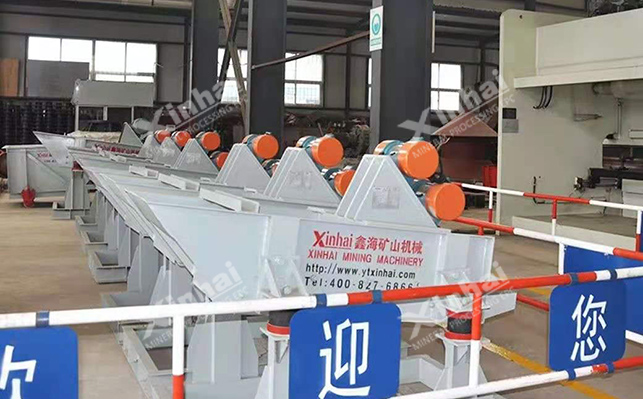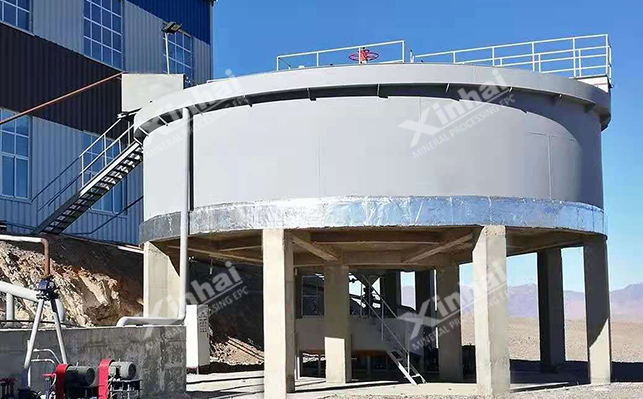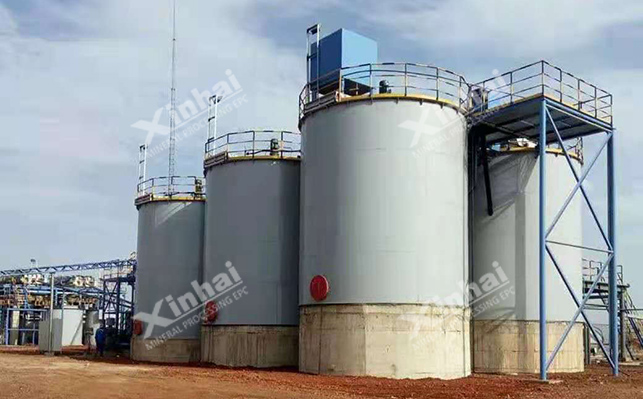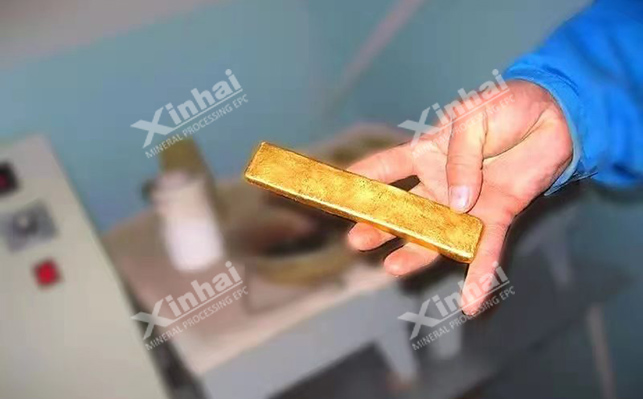
15311826613
Click to add WeChatGold Carbon-in-Leaching (CIL) Process is a process that adds activated carbon to the slurry and simultaneously leaches and adsorbs gold. It is one of the main methods for gold beneficiation. This process is developed on the basis of the carbon-in-pulp process (CIP), combining the two steps of cyanide leaching slurry and activated carbon adsorption into one, reducing the number of leaching tanks, shortening the process flow, and reducing infrastructure investment and production costs.

Generally, the process flow of gold extraction from carbon-in-leach (CIL) mainly includes six stages: slurry removal, pre-leaching concentration, leaching and adsorption, desorption electrolysis, pyrometallurgy, and activated carbon regeneration.
Before leaching and adsorbing cyanide slurry, it is necessary to remove impurities such as sawdust from the slurry to prevent impurities from adsorbing gold in the slurry and mixing it into the rich carbon, blocking the pipeline and the carbon screen. If necessary, the slurry needs to be concentrated and a descaling agent needs to be added. The descaling agent can reduce scaling on the surface of the activated carbon and the screen.
In general, a cleaning operation is set up before concentration and after grinding. Medium-frequency linear vibrating screens are often used as cleaning equipment, and the screen size is selected as small as possible while ensuring that the screen surface does not run.

The concentration of the ore pulp not only affects the leaching time, but also affects the suspended state of the activated carbon. Therefore, in order to make the ore pulp reach the appropriate leaching concentration, the ore pulp needs to be dehydrated by a concentrator before leaching.
When the overflow concentration of grinding and classification is 18-22%, it is not suitable for direct leaching. The slurry must be concentrated first. At this time, it is recommended to use a high-efficiency concentrator with small footprint and high concentration efficiency.

A major feature of the gold ore carbon leaching (CIL) process is that the gold leaching and adsorption operations are carried out simultaneously, and the specifications and number of leaching tanks need to be determined according to the processing capacity of the gold ore concentrator.
The impurity-removed and concentrated slurry is pumped into a high-efficiency leaching tank arranged in a stepped shape, generally 5-12 leaching tanks are configured in series. Cyanide is added to the first one or two leaching tanks, and activated carbon is added to the rear leaching tank. Since the first one or two tanks have just added sodium cyanide, the amount of leached gold is small, so most gold mine carbon leaching plants use the first one or two leaching tanks as pre-leaching tanks and the rear leaching tanks as leaching adsorption tanks.

Generally, each leaching tank is equipped with a carbon screen to separate activated carbon and slurry. Activated carbon and slurry are adsorbed in countercurrent, fresh activated carbon is added from the last leaching adsorption tank, and gold-loaded carbon is discharged from the first leaching adsorption tank. Activated carbon becomes gold-loaded carbon due to the adsorption of gold in the slurry. After the adsorption operation is completed, the slurry containing gold-loaded carbon is sent to the carbon extraction screen through an air lift to separate the slurry from the activated carbon. After screening and washing, the slurry is sent to the desorption electrolysis operation. The gold grade of the slurry solution after adsorption by this method is generally 0.01-0.03g/m³.
The currently commonly used desorption method for gold-loaded carbon is the high-temperature and high-pressure desorption method, that is, under high temperature and high pressure conditions, anions that are easily adsorbed by activated carbon are added to the desorption system to replace Au(CN)2- to obtain gold mud and lean carbon, thereby achieving gold desorption.
The precious liquid obtained by desorbing the gold-loaded carbon is recovered by ionization to obtain solid gold.

In production practice, most gold mine carbon leaching plants use pyrometallurgy, that is, the gold mud obtained by simple pickling and impurity removal operations is directly smelted into gold ingots. After pyrometallurgy, the purity of gold ingots can reach more than 99.99%.

Activated carbon needs to be regenerated after adsorption and desorption to restore its adsorption performance. Usually, activated carbon is first acid-washed to remove carbonate and other accumulations after desorption. After multiple returns, it needs to be thermally activated to restore the adsorption activity of activated carbon, and then it can be recycled again. The equipment required for activated carbon regeneration mainly includes activated carbon acid washing tank, neutralization tank, regeneration kiln, fine carbon separation screen, water quenching tank, etc.
The gold ore carbon leaching (CIL) process has strong adaptability to gold ore and is suitable for most types of gold ores. It has simple procedures, low investment costs, easy operation, and high gold recovery rate. In production practice, it is recommended to conduct mineral processing tests and determine scientific and reasonable process flow and technical parameters based on the results of mineral processing tests. Avoid random application or simple copying.